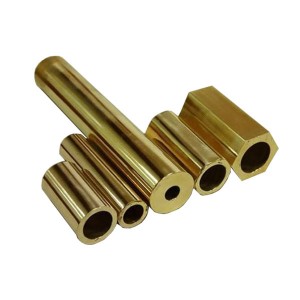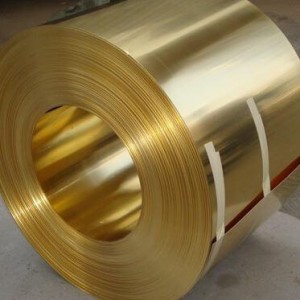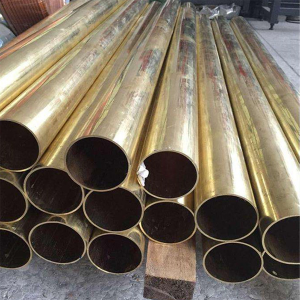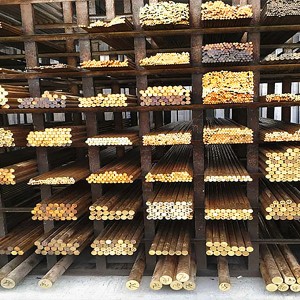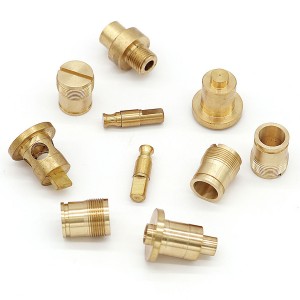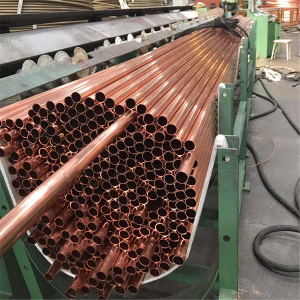High Precision Custom Brass Tube And Solid Rod
Purity measurement
The purity of brass can be measured using the Archimedes principle, where the volume and mass of the sample are measured, and then the percentage of copper contained in the brass can be calculated based on the density of copper and the density of zinc.
Ordinary brass
It is an alloy of copper and zinc.
When the zinc content is less than 35%, zinc can be dissolved in copper to form a single-phase alpha, called single-phase brass, good plasticity, suitable for hot and cold pressing processing.
When the zinc content is 36%~46%, there is α single phase and β solid solution based on copper and zinc, which is called biphasic brass, β phase makes brass plasticity decrease and tensile strength rise, only suitable for hot pressure processing.
If we continue to increase the mass fraction of zinc, the tensile strength decreases and has no use value.
The code is indicated by "H + number", H means brass, and the number means the mass fraction of copper.
For example, H68 means brass containing 68% copper and 32% zinc, and casting brass is preceded by the word "Z", such as ZH62.
For example, ZCuZnzn38 means the casting brass with 38% zinc and the remaining amount of copper.
H90, H80 belong to single-phase brass, golden yellow.
H59 is duplex brass, which is widely used for structural parts of electrical appliances, such as bolts, nuts, washers, springs and so on.
In general, single-phase brass is used for cold deformation processing and dual-phase brass is used for hot deformation processing.
Special brass
The multi-alloy formed by adding other alloying elements to the common brass is called special brass. The elements often added are lead, tin, aluminum, etc., and accordingly can be called lead brass, tin brass, aluminum brass. The purpose of adding alloying elements. The main purpose is to increase the tensile strength and improve the processability.
The code: "H + the symbol of the main added element (except zinc) + the mass fraction of copper + the mass fraction of the main added element + the mass fraction of other elements".
For example: HPb59-1 indicates that the mass fraction of copper is 59%, the mass fraction of lead containing the main additive element is 1%, and the balance of zinc is lead brass.
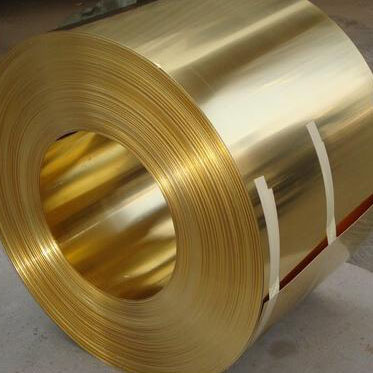
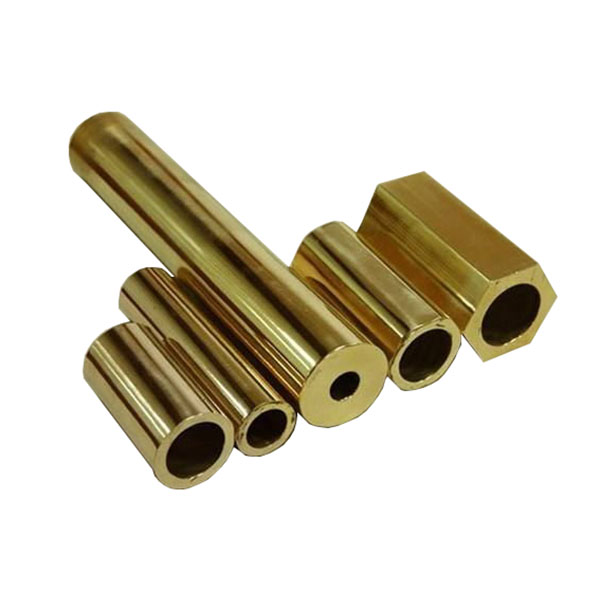
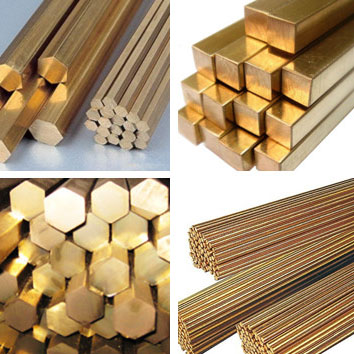
The mechanical properties of brass vary with the zinc content due to the different amounts of zinc in brass. For α brass, both σb and δ increase continuously as the zinc content increases. For (α+β) brass, the room temperature strength increases continuously until the zinc content is increased to about 45%. If the zinc content is increased further, the strength decreases sharply due to the appearance of the more brittle r-phase (Cu5Zn8 compound-based solid solution) in the alloy organization. (The room temperature plasticity of (α+β) brass always decreases with the increase of zinc content. Therefore, copper-zinc alloys with a zinc content of more than 45% have no practical value.
Ordinary brass is used in a wide range of applications such as water tank belts, water supply and drainage pipes, medallions, corrugated pipes, serpentine pipes, condensation pipes, shells and various complex shaped punching products, small hardware, etc. With the increase of zinc content from H63 to H59, they can well withstand the hot state processing, and are mostly used in various parts of machinery and electrical appliances, stamping parts and musical instruments.
In order to improve the corrosion resistance, strength, hardness and machinability of brass, a small amount (generally 1% to 2%, a few up to 3% to 4%, very few up to 5% to 6%) of tin, aluminum, manganese, iron, silicon, nickel, lead and other elements are added to the copper-zinc alloy to form a ternary, quaternary, or even five element alloy, which is complex brass, also known as special brass.
Brass has strong wear resistance, brass is often used in the manufacture of valves, water pipes, air conditioning internal and external machine connection pipes and radiators, etc.
Leaded brass
Lead is practically insoluble in brass and is distributed on the grain boundaries in the form of free masses. There are two types of lead brass according to their organization: α and (α+β). α lead brass can only be cold deformed or hot extruded because of the harmful effect of lead and the low plasticity at high temperatures. (α+β) lead brass has good plasticity at high temperature and can be forged.
Tin brass
The addition of tin to brass can significantly improve the heat resistance of the alloy, especially to improve the ability to resist corrosion of seawater, so tin brass has the name of "naval brass".
Tin can be dissolved into the copper-based solid solution, solid solution strengthening effect. However, with the increase of tin content, the alloy will appear brittle r-phase (CuZnSn compound), which is not conducive to the plastic deformation of the alloy, so the tin content of tin brass is generally in the range of 0.5% to 1.5%.
The commonly used tin brasses are HSn70-1, HSn62-1, HSn60-1, etc. The former is an alpha alloy with high plasticity and can be processed by cold or hot pressure. The latter two grades have (α+β) two-phase organization, and often appear a small amount of r-phase, room temperature plasticity is not high, and can only be deformed in the hot state.
Manganese brass
Manganese has a large solubility in solid brass. Add 1% to 4% of manganese in brass, can significantly improve the strength and corrosion resistance of the alloy, without reducing its plasticity.
Manganese brass has (α+β) organization, commonly used are HMn58-2, and the pressure processing performance in cold and hot state is quite good.
Ferrous brass
In iron brass, iron precipitates as particles of iron-rich phase, refines grains as nuclei, and prevents the growth of recrystallized grains, thus improving the mechanical properties and process properties of the alloy. The iron content in ferrobrass is usually below 1.5%, and its organization is (α+β), with high strength and toughness, good plasticity at high temperature, and deformable in cold state. The commonly used grade is Hfe59-1-1.
Nickel brass
Nickel and copper can form a continuous solid solution, significantly expanding the alpha phase region. The addition of nickel to brass can significantly improve the corrosion resistance of brass in the atmosphere and seawater. Nickel also raises the recrystallization temperature of brass and promotes the formation of finer grains.
HNi65-5 nickel brass has a single-phase alpha organization, with good plasticity at room temperature, can also be deformed in the hot state, but the content of impurities lead must be strictly controlled, otherwise it will seriously deteriorate the hot processing properties of the alloy.
Heat processing temperature 750~830℃; annealing temperature 520~650℃; low temperature annealing temperature 260~270℃ for eliminating internal stress.
Environmental brass C26000 C2600 Excellent plasticity, high strength, good machinability, welding, good corrosion resistance, heat exchangers, tubes for paper making, machinery, electronic parts.
Specification (mm): Specification: thickness: 0.01-2.0mm, width: 2-600mm.
Hardness: O, 1/2H, 3/4H, H, EH, SH, etc.
Applicable standards: GB, JISH, DIN, ASTM, EN.
Features: excellent cutting performance, suitable for automatic lathe, CNC lathe processing of high-precision parts.





